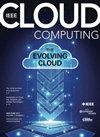人工智能辅助的安全控制映射为受管制的工作负载构建的云
Q1 Computer Science
引用次数: 4
摘要
数据隐私、安全和合规性问题阻碍了许多企业将其关键应用程序迁移到公共云基础设施。为了解决这个问题,云提供商为严格监管的行业提供专门的云,这些行业实施规定的安全标准。迁移过程中的一个关键步骤是确保云提供商完全满足客户的安全需求。在一个典型的云提供商的基础设施中有几百个服务,这就变成了一项非常重要的任务。每个适用服务公开的几十到几百个安全检查需要与来自客户的几百到几千个安全控制相匹配。将客户的控件映射到云提供商的控件集是由专家手动完成的,这个过程通常需要几个月的时间才能完成,并且需要对每个新客户进行重复。此外,在法规或业务变更以及云基础设施升级之后,必须重新评估这些映射。我们提出了一种用于地图安全控制的人工智能辅助系统,它大大减少了人类专家需要考虑的候选数量,从而大大加快了地图绘制过程。我们通过经验比较了几种控制映射模型,并表明使用微调变压器网络的分层分类效果最好。总体而言,我们的实证结果表明,该系统在实际数据上表现良好。本文章由计算机程序翻译,如有差异,请以英文原文为准。
AI-Assisted Security Controls Mapping for Clouds Built for Regulated Workloads
Data privacy, security and compliance concerns prevent many enterprises from migrating their critical applications to public cloud infrastructure. To address this, cloud providers offer specialized clouds for heavily regulated industries, which implement prescribed security standards. A critical step in the migration process is to ensure that the customer's security requirements are fully met by the cloud provider. With a few hundreds of services in a typical cloud provider's infrastructure, this becomes a non-trivial task. Few tens to hundreds of security checks exposed by each applicable service need to be matched with several hundreds to thousands of security controls from the customer. Mapping customer's controls to cloud provider's control set is done manually by experts, a process that often takes months to complete, and needs to be repeated with every new customer. Moreover, these mappings have to be re-evaluated following regulatory or business changes, as well as cloud infrastructure upgrades. We present an AI-assisted system for mapping security controls, which drastically reduces the number of candidates a human expert needs to consider, allowing substantial speed-up of the mapping process. We empirically compare several controls mapping models, and show that hierarchical classification using fine-tuned Transformer networks works best. Overall, our empirical results demonstrate that the system performs well on real-world data.
求助全文
通过发布文献求助,成功后即可免费获取论文全文。
去求助
来源期刊

IEEE Cloud Computing
Computer Science-Computer Networks and Communications
CiteScore
11.20
自引率
0.00%
发文量
0
期刊介绍:
Cessation.
IEEE Cloud Computing is committed to the timely publication of peer-reviewed articles that provide innovative research ideas, applications results, and case studies in all areas of cloud computing. Topics relating to novel theory, algorithms, performance analyses and applications of techniques are covered. More specifically: Cloud software, Cloud security, Trade-offs between privacy and utility of cloud, Cloud in the business environment, Cloud economics, Cloud governance, Migrating to the cloud, Cloud standards, Development tools, Backup and recovery, Interoperability, Applications management, Data analytics, Communications protocols, Mobile cloud, Private clouds, Liability issues for data loss on clouds, Data integration, Big data, Cloud education, Cloud skill sets, Cloud energy consumption, The architecture of cloud computing, Applications in commerce, education, and industry, Infrastructure as a Service (IaaS), Platform as a Service (PaaS), Software as a Service (SaaS), Business Process as a Service (BPaaS)
 求助内容:
求助内容: 应助结果提醒方式:
应助结果提醒方式:


